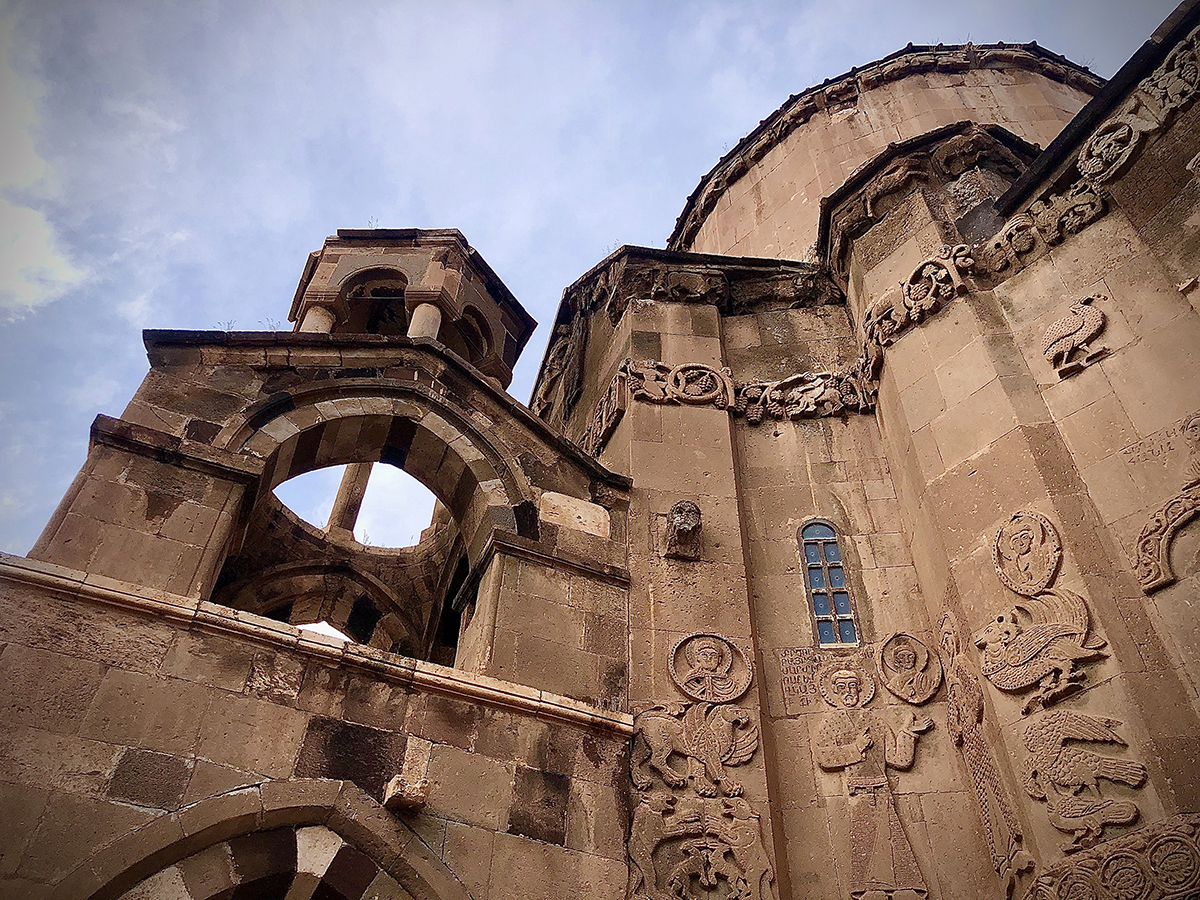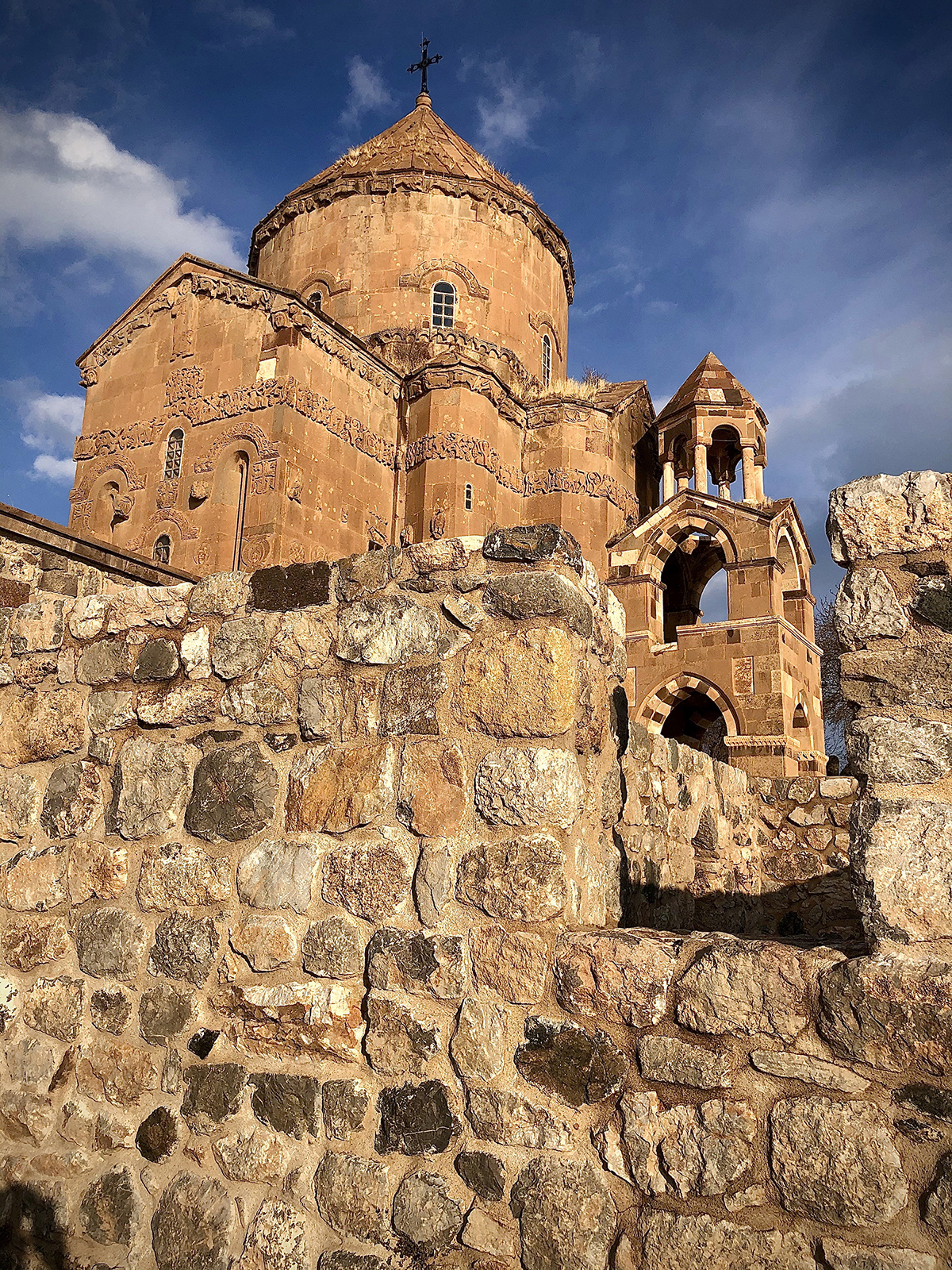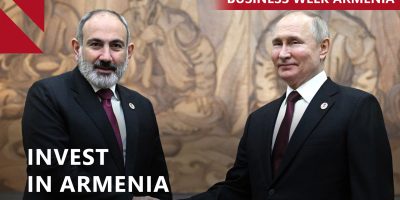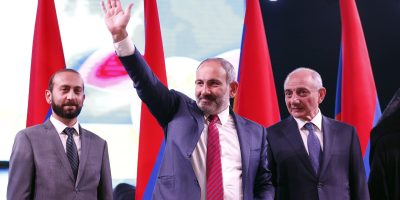Patrick Azadian
Every family has a story.
My paternal grandfather, Sahak, never talked about the Genocide. And I never had a chance to meet my grandmother, Carmil, as she passed away before I was born, but the names such as Shatakh (Çatak), Hayots Dzor, Van, Rshtuniq, Vaspurakan and Vostan were all familiar to me from young age. I also vaguely remember my grandfather’s friends would tease him every now and then about him being from Karkar, a place which was only known for its lone apple tree. I still haven’t discovered where that is or if the story was true. Some people referred to my grandfather as Rshtuni, a nickname he loved as it referred to a small but brave house of nobility to the south of Lake Van (Sea of Rshtuniq).
I only know bits and pieces of the story of my family from my father’s side. I am told my grandfather was from Shatakh to the south of Lake Van in the historic Armenian province of Vaspurakan, and my grandmother was, most probably, from Kyoshk, a village in Hayots Dzor to the east of Lake Van. There is not much population data on this village which was once inhabited by Armenians. The only reference I could find indicated that the population of the village vanished during in 1915. That sounds about accurate, but only just. My grandparents headed south to what is now Iraq with what was left of their respective families under the protective watch of a group of Armenian fedayees lead by Levon Shagoyan. They eventually settled in Abadan, Iran. At the end of last year, I started putting the pieces of their story together as I was planning to visit my grandparents’ native land and seeing the landscape my grandfather probably saw at age eight before he was forced to leave his birthplace behind. My grandmother was only three when she and her family made their way south.
Much still remains unknown to me. Many of the dots are still disconnected, and many will never connect. But visiting the land of my grandparents’ birth seemed like a good first step.
***
Passing the Georgia-Turkey border, I did not know what to expect on my first visit to Western Armenia, Igdir and Kars in what is now officially Turkey (for short, I’ll refer to them as Western Armenia although technically, Igdir and Kars provinces, which include the ancient city of Ani, are not part of Western Armenia). I must confess, I was one of those people who refused to visit Western Armenia for a variety of reasons and had mild contempt for those who spent more time there than in the Republic of Armenia. The symbolic boycott of Turkey was not the reason for my artificially induced lack of interest. I reasoned to myself that by visiting my ancestral homeland, I would end up putting too much emotional energy into something that’s associated with pain, suffering and loss; and that energy is better spent focused on the now – today’s Armenia. I fought the temptation to become even more emotionally attached to the past, the loss, and the tragedy. I reasoned that every drop of emotional energy that I could have invested on the land that witnessed the near annihilation of my people, should be spent on today.
Moreover, I reasoned that tours to Western Armenia were a convenient and unacknowledged partnership between Turkey and Armenians. As Armenians invested their emotional energy into Western Armenia, they could become detached from current Armenia, consider it less ‘authentic’ and become pre-occupied with the sentimentality and the perceived utopianism of the past. On the other hand, by passively encouraging an attachment to Western Armenia, Turkey could benefit from Armenians’ detachment from the Republic of Armenia and its earthly problems. I did not want my emotions to be manipulated. Having roots in the land and carrying the learned memory of the Genocide throughout one’s adult life, make some of us vulnerable to emotional manipulation.
I was probably wrong. For me, at least, the visit had the opposite affect. The western part of our homeland had more then pain and suffering in store for me. Perhaps, it made my Armenian identity more whole and helped me appreciate the present and get a better grasp on the potential of our people.
***
On the well paved road to Kars, there wasn’t much that elicited emotion and attachment. Eastern Turkey seemed like a hybrid of Europe and the Middle East. Nice highways, modern buildings, cargo trucks, Turkish and Turkified place names, and every now and then, a colossal Turkish flag that seemed to want to remind us, and the local Kurds, in no uncertain terms that we were officially in Turkish territory. To the untrained eye and naïve minds, someone unfamiliar with history or unwilling to take a detour, it would seem Armenians never lived on these lands.
As we entered Kars, that changed suddenly. Under the clutter of Turkish language store signs and through the fall of heavy snowflakes, there was a familiar aura to the buildings. Without the Turkish language signage, you could be excused for thinking that you were in a parallel universe to Gyumri. Borders and states are strange phenomena. In this region, once the border is redrawn, the demographic and the man-made structures of the land within the border swiftly begin to transform to match the state in which they find themselves. In Kars, however, not enough time had passed for the physical amalgamation of the city into a stereotype of what is supposed to be on that side of the border. The Holy Apostles Church (now converted to a mosque) is a testament to the Armenian roots of the city. And then there is the dilapidated structure of what some consider to have been the house of Yeghishé Charents. There are a few versions to the story of the house. The first version is that the house was Charnets’ and was demolished by the order of the mayor of Kars who is incidentally of Azerbaijani origin. The second version is that Charents did actually live there, the house wasn’t his but the house was demolished by the order of the same mayor. And finally, the last version claims that Charents never lived there but the house was nevertheless demolished by the order of the mayor because he considered it to be Charents’ house. The only common thread to the three stories is on whose orders the house was demolished and why. Kars is a good example of what happens to a city in a relatively short period of time when there is a shift in the border and the city finds itself in hostile territory. A city that had an Armenian majority just about a century ago is now void of Armenian life. A possible lapse of judgement by the leadership, a tiredness in the legs and hearts of soldiers due to false promises of peace and prosperity by foreign powers or a realignment of colonial forces somewhere else in the world, and in a blink of an eye, the destiny of a city and its people can change course forever.
As we drove out of Kars on our way to Van, the little that’s left of Armenia in the shape of Republic of Armenia, felt even more precious. The highway to Van was wide, the spaces vast and nature seemed unadulterated by human intervention. In the presence of the cargo trucks and occasional stops by the Turkish military police, it took all the powers of my imagination to visualize that the Bagratid, and later, the Zakarid Armenian nobility once roamed these lands on their aristocratic horses. Not long ago, Armenian peasantry worked this land and in the face of all odds, maintained their identity throughout generations.
The capital of Biainili and the land of Artzruni noblemen awaited us.
***
We entered the historic Armenian province of Vaspurakan (very roughly, present-day Van ili) from the north. The well-paved road twisted and teased until we finally got a glimpse of the northeastern tip of Lake Van. It was late December and the steely blue surface of the lake shimmered in the meek winter sun. Large stretches of untainted coastline opened to our right with snow-covered hills hugging the banks of the lake. Lack of development and commercialization on the shores of Lake Van came as a pleasant surprise. It made me think that the landscape that our ancestors saw was not very different from what I was seeing on that day. Generations were inspired by this landscape, toiled the land, fished the lakes, created and innovated with this landscape in the background. Demographics and cultural monuments change, sometimes as a natural evolution of history that stretches through centuries, and at other times, by criminal and systematic planning by mankind. But nature stands still and is witness not only to the evolution but also to the suffering.
Our arrival at Van was unceremonious. The modern city of Van felt ‘un-nostalgic.’ It was very different than Kars. First order of business was to climb the Van Fortress. The layers of the rulers of Van were present in the walls of the fortress starting from Urartians to the present. From the top of the Fortress, what little that was left of the old city looked like a miniature surface of Mars, void of life. About a century ago, it was from there that Aram Manukian inspired and lead the city’s Armenian population to choose life over the certainty of death.
We eventually descended to the city from the fortress. Van is practically a new city with shopping malls and many newly constructed apartment buildings with distinct touches of Turkish design elements. Here, trying to induce nostalgia is not a possibility. Unlike Kars, where the majority of the population is either Turkish or of Azerbaijani ancestry, there was a solid Kurdish majority there. And unlike Kars, the military police were a presence with armored vehicles taking parking space on the snow-covered streets. Locals don’t shy away from cultural appropriation with Urartian themed names of businesses common everywhere. Tourist shops were full of Akhtamar Island themed souvenirs and like Yerevan, hotels were brimming with Iranian tourists and retail stores were full of ‘Made in Turkey’ products. At first sight, the population of Van felt introverted and rooted in tradition but contemporary at the same time.
On our way to catch a boat to see the Holy Cross Cathedral on the Akhtamar Island, we passed Khorkom (present-day Dilkaya), Arshille Gorky’s birthplace and later Vostan (present-day Gevaş). Gorky (Vostanik, at the time) was about ten or twelve years old when he and his mother escaped the Genocide in 1915. “The eye functions as the brain’s sentry,” said Gorky in 1927. At the time, Gorky had already started the ‘Artist and His Mother’ paining which would preoccupy him until about 1942. The hues and compositions of the land must have left an impression on his young mind. Perhaps, these colors found their way into ‘One Year the Milkweed,’ ‘After Khorkom,’ or ‘Wish Fulfillment.’ And perhaps, I was overreaching but his story tells us that calamity and horror are not always able to suffocate creativity and ingenuity. But Gorky’s final destiny also tells us that some wounds don’t heal.
We were now in the historic canton of Rshtuniq, the hereditary domain of the Rshtuni noblemen. This stretch of land is on the shores of lake Van to the south of Akhtamar Island. In ancient times, the Rshtuni house fought in the Armenian army with one-thousand cavalrymen. Rshtunis also commanded the southern army of Greater Armenia. According to Armenian historian, Movses Khorenatsi, Tigran the Great appointed Barzapran Rshtuni in the southern regions of the empire as the commander of the Armenian and Persian armies. Under Barzapran Rshtuni’s command, the Armenian army captured Palestine and Jerusalem at the height of the Armenian empire (80 BC). My grandfather had not been wrong in his assessment of the Rshtunis. The last mention of Rshtunis in history is in 700 AD.
The wind bouncing off the surface of Lake Van was unforgiving and made it almost impossible to stand on the deck of the boat. But this was a scene that had to be internalized with its full force. We finally docked and set foot on the island. We made our way to the Holy Cross Cathedral, which is now officially called the Akdamar Museum (Akdamar, meaning ‘white vein’ is the Turkified replacement for the the island’s Armenian name, Akhtamar). It is a miracle that the cathedral that was built (915-921 AD) during the reign of Armenian King Gagik I Artzruni of the Kingdom of Vaspurakan still stands tall on the island, considering the island was used as a military training ground in the 1950’s. After 1915, the church had been exposed to extensive vandalism. Before the restoration of the church, the reliefs on the church wall were used as a shooting range. Zakarya Mildanoglu, an architect who took part in the restoration of the church, explained the situation during an interview with Hrant Dink as “The facade of the church is full of bullet holes. Some of them are so big that they can not be covered during the renovation process.” In 1951 an administrative order was issued to demolish the church, but Yasar Kemal, a prominent Kurdish writer and human rights activist, managed to stop the process. Regardless of what one thinks of the motives behind the restoration of the Holy Cross Cathedral, the world of culture and architecture is a richer place with the cathedral in its restored form. The restoration of the Cathedral is also a testament to the fact that no society is homogenous in thought and deed, and individuals and people organized around a cause can make a difference in the realm of cultural preservation and the fight against historical revisionism.
On the way back to Kars, we took a detour to stop off at a smaller and lesser known lake to the east of Lake Van. Lake Arjak or Arjishak (present day Erçek) is a salt lake that appears on the maps of historic Vaspurakan. There are many legends about the lake. Armenians believed that a blazing horse (hreghen dzi), man, and woman lived at the lake. Near the Arjak (or Arjishak) village there was a spring and the blazing woman would often bathe there but was in danger because of the snakes nesting on the banks of the spring. The blazing horse would come to the rescue and trample on the snake pits to keep the woman safe. Locals believed that without the blazing horse the entire world would be full of snakes. As such, the blazing horse came to be known as a symbol for protection and preservation of the family in Armenian folklore.
Part of what makes a nation is its common memory, customs and legends. Much of the latter is connected to the land. With the loss of land, legends are uprooted and in time, fade from the memory of the people, cutting the cord of connection and commonality, and making them a collection of individuals as opposed to a people.
***
We were now leaving the domain of Artzrunis and re-entering the land of Bagratids. Ani, the ancient capital of Bagratid Armenia from 965 to 1045 AD awaited us on the northwestern bank of the Akhuryan River.
As we entered the gates of the ancient capital, the splendor of medieval Armenia came to life. And although earthquakes, the harsh climate, human and state-sponsored destruction have eroded the overall authenticity of the medieval city, even in is current form, Ani is still a colossal source of inspiration. Walking the dirt paths of the city one can imagine the city at the height of its power when it was one the largest cosmopolitan centers in the world. While historic revisionism has taken a more clever tone in the past few decades by over-emphasizing the contributions of Zoroastrian, Christian, Muslim, Byzantine, Seljuk, Georgian and ‘Anatolian’ influences of the city while at the same time, not denying the Badgratid, and therefore, the Armenianness of the medieval metropolis, Ani stands as the most tangible testament to the greatness of medieval Armenia as a nation-state as well as the potential and the creative ingenuity of the Armenian people.
“There is not a single monument that is not facing serious structural problems of stability, either missing parts of the fabric, due to seismic action or human destruction, or problems of unsuccessful interventions,” reads the UNESCO description on the archeological site of Ani. The most recent conservation efforts have focused on dealing with the effects of deterioration with a strong emphasis on carrying out interventions that maintain the qualities of the original materials as well as removing the clumsy restorations in a number of monuments. In other words, restoration work does not seem to be a priority at Ani, and learning about the unprofessional attempts of the past, that’s probably a good thing until real experts can partake in the process, as they did in the case of the Holy Cross Cathedral on Akhtamar.
***
History matters. It tells us where we have been and is a mirror to our common creative potential. Western Armenia, and in particular the Holy Cross Cathedral of Akhtamar and the medieval city of Ani, are testaments to the resources of states in unleashing and sponsoring the creative potential of a people. In retrospect, viewing the potential of the Armenian people through the prism of today would be an injustice to what is possible. Ani in its splendor, was a place where creative forces of architectural experimentation and innovation, commerce, arts and military prowess as well as astute foreign diplomacy came together. Western Armenia holds an undeniable part of the Armenian identity for present day Armenia and the Diaspora. Beyond physical annihilation, the Armenian Genocide was an attempt to deprive us of the coming blossoms of that very important branch of our family tree. It was an attempt to disarm us of the tools to create and innovate. And an attempt to stop us from passing on the legend of the Arjak Lake to the future generations.
Despite the fact the Ani is now a designated archeological site and the Holy Cross Cathedral of Akhtamar stands restored, the past monuments of the Armenian civilization need the attention and protection of the Armenian people worldwide. Ani is still on crutches and it can still fall. And while the preservation of history and culture is a reminder of our ability to create and build, without innovating and creating the new, by only copying the relics of the past and mimicking colonial cultures, we can be in danger of becoming a people that lives by the glory of the past and is consumed by the pain of our ancestors, a tree that only knows how to survive and has lost its ability to blossom and bare harvest. Cherishing what is left of historic Armenia in the form of the Republic of Armenia and strengthening its statehood, can go a long way in creating the environment where the Armenian people can once again live up to their potential and truly recover from the calamity of the Genocide.
The story of Sahak and Carmil still remains somewhat of a mystery but now I can claim I have seen the landscape that their eyes had witnessed during their childhood. What I can never claim is to have experienced the suffering of their youthful souls.



































